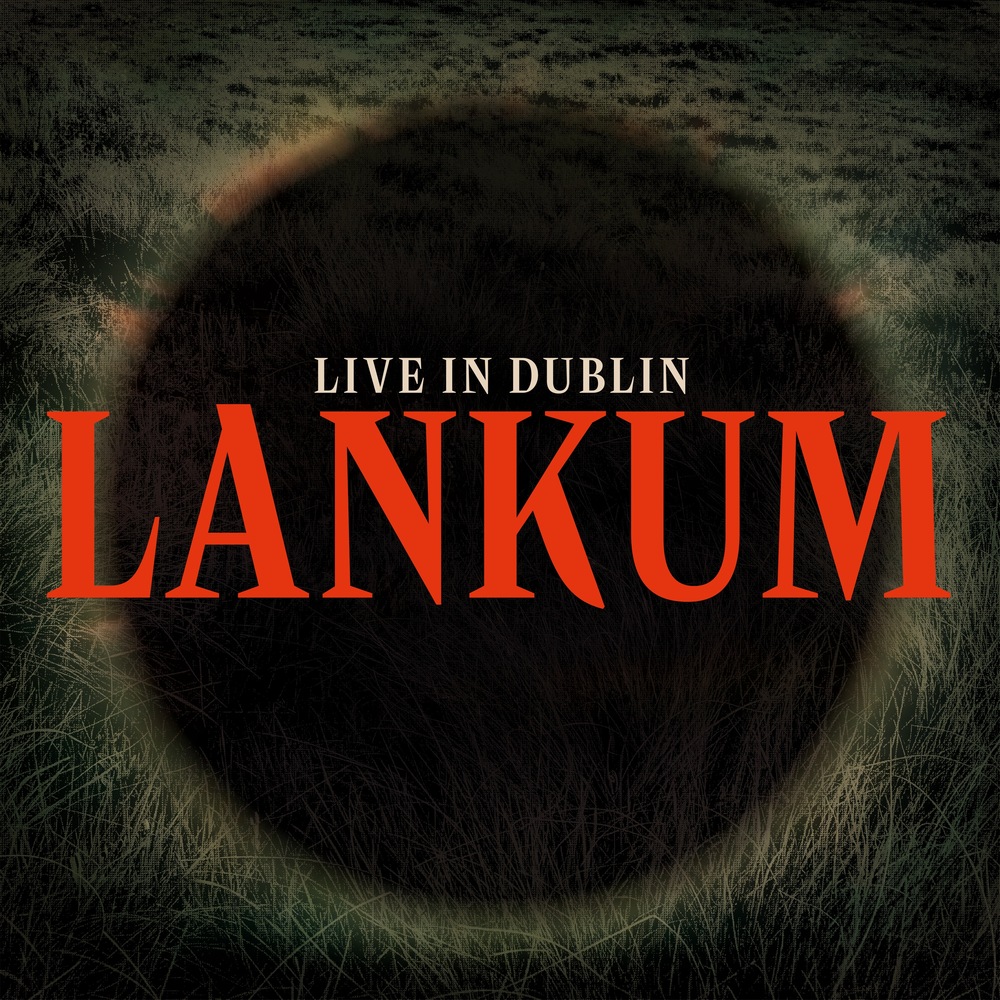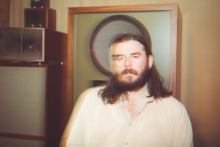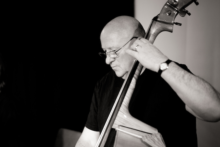Say what you like about the British Empire, and its crimes are legion, it sure had a sense of irony. The colonisation of Ireland took place over centuries, but it escalated with the Tudor conquests and the Jacobean seizure of Ulster, gifting the land and its resources to settlers from Scotland and England. The term ‘plantation’ is designed to sound organic, a natural course of events, as fated as the seasons, and not the subjugation, theft and devastation that it was.
The story is told as much in absences as presences. According to the Wolfgang Reforest project, 80 per cent of Ireland had been woodland, and it was deeply enshrined in the law of the land, “Brehon laws promoted the symbiotic relationship between humans and nature. Trees were protected because of their value to the community. Chopping down trees was punished by loss of cattle and loss of standing in the community.” By the mid-17th century, the woods were a mere 2 per cent of the land and, so far, it’s stayed that way. The island of trees survives more in language than in topography, with many placenames (Derry, Kildare, Newry, Youghal, Kylemore etc) having arboreal origins. Mostly exported as timber, the wood was used for the construction of urban environments and often, especially from Henry VIII onwards, the merchant and battleships upon which the nautical British Empire was built. Under Elizabeth I, a campaign was launched to wipe out the forests because they were seen as a base for Irish kern or rebels (akin to the US destruction of Vietnamese rainforests – Operation Ranch Hand – itself inspired by British deforestation in Malaysia). The policy was disastrous for the local ecosystem (the wolves of Ireland were deliberately annihilated, for example) and the native population who had sought refuge there. All of which took place under the guise of ‘civilising’ the island.
A mysterious abyssal circle features on Aisling Redmond’s sleeve art for Lankum’s Live In Dublin. Its meaning is not explained. It could be representative of the city of Dublin, the name of which derives from medieval Gaelic for ‘dark pool’. It could be a well or a pupil or a sinkhole. It might be a black hole – the rip in the space-time continuum the band mentions chancing upon and unleashing, in pantomime humour, on the recording. It could be mortality, despair or the heat death of the universe. I like to think of it as a visual manifestation of one of the Lankum’s greatest features – the drone.
Given they are musical evangelists and explorers (Ian Lynch’s Fire Draw Near podcast is an extraordinary deep dive into traditional songs from Ireland and the isles beyond), the band might contest the idea that the drone ever went away. There is something though about the treble end of folk music – the Ariel quality of the tin whistle for example – that has become more synonymous with the pace and tone of pubs and fairs. Yet it’s perhaps the drone that best suits our times – the existential grind, the escapologist trance, the fear, the drift, the sink, the depths, the abandon and whatever it is that hauls you back, if you’re lucky enough. The claim could be made, though I doubt the band would, that Lankum have revived a tradition. But what or whose tradition? If any, the kern. What identified the kern, often before sight, was the drone of their pipes. It was an expression of rage, grief, autonomy, and unease, rightful unease for those who heard it beyond the trees. The English writer and colonist Barnabe Rich called them “the very Hags of Hell, fit for nothing but for the gallows.”
The comparison is, of course, absurd. If ever there were an urban and urbane group, it’s Lankum; a working-class firebrand Dublin band, who formed while on the dole during the disintegration of the Celtic Tiger. They seem to broach no bullshit and see the world for what it is. The bittersweet lilt of ‘The Young People’ is suddenly riven by a drone, like a sea monster emerging, reality bursting through the lies, platitudes and illusions of contemporary discourse and politics. Their atmospheric take on Irish music is almost gothic, allowing them to travel far beyond the borders of trad-folk and into metal, ambient drone, industrial, post rock, picking up acolytes along the way, being embraced by those who wisely see no boundaries but the ones we make through neurosis.
Their impact has been revitalising, if not revolutionary. The most obvious comparison might be to those earlier groups who seemed to renew the form, generationally. The Dubliners, for instance, or The Pogues. They did so, as Lankum succeed in doing, by having a reverence for the original innovations and possibilities of the music, while shrugging off kitsch and the cold dead hand of the gatekeepers and priests of trad music, the stagnancy of which, however exalted or decorous, destroys the rain cycle of music. And by bringing in outside influences. In the case of The Dubliners (named after Joyce’s masterpiece), they looked to America, the Beats and the post-Guthrie/Leadbelly folk scene and to the inner exile republic of letters in the pubs of Dublin (Behan, Kavanagh, O’Brien etc) that existed in spite of the Church and State version of Ireland. The Pogues were literary too, underground and punk. In Luke Kelly, you can hear Paul Robeson. In overlooked Pogues’ songs like ‘Hell’s Ditch’ (channelling Jean Genet), ‘Turkish Song Of The Damned’ and so on, you can hear an outwards-gazing seafaring tradition, as all islanders inevitably are. To this, Lankum add cinema, and not just the visual kind but the psychic. In each case, there was a sense of something wild being released but, really, it’s a return. Lankum, like The Pogues, The Dubliners and many others, are a radical band in the true sense of the word. The etymology of ‘radical’ is not to overhaul or make it new. It’s to dig into the roots. To strip away all the rules and accretions and work out why any of this started or matters in the first place. To remember why it is vital.
And ‘The Wild Rover’, Lankum’s ‘The Wild Rover’, is the revelation needed. When the drone begins it sounds like it is rising from the bowels of hell, music as necromancy (a hint at why metalheads have embraced the band). The sense of the diabolical is there from the beginning in their name, which comes from a shape-shifting English murder ballad ‘Lamkin’ where the killer appears to be a bogeyman or the devil himself, “Beware of False Lamkin that lives in the moss.” There is something to this, perhaps postcolonial, other than simply an association with the darkness. In Paradise Lost, in the Romantic interpretation at least, the demonic is the anti-heroic agent of change, ambition, disobedience, resistance to stasis and stagnancy, independence in the face of ‘benevolent divine dictatorship. Or it could be a subliminal nod to an earlier Ireland, before the conquests of cross and crown, the forgotten gods and practices were repainted as unholy, debased, sinister. Over ten minutes, ‘Wild Rover’ gathers until it is monumental, cataclysmic by its end, just the right side of disorder and implosion. Götterdämmerung stuff. The first time I heard this version, on The Livelong Day studio album, it was clear Irish music would no longer be the same. A hundred listens since and I’m still captive, rapt for every second. It’s a song where you down your tools and distractions, where time stops and the mind is owned. The climax is euphoric and chilling, the transformation of a song known to everyone in Ireland as a bawdy drinking tune to one of lament, exploitation, ruin because Lankum have, in the radical sense, gone back to its surprising, antithetical and supranational roots as an old English temperance cautionary tale.
What holds it all together is that Lankum largely channel their experimental impulses around tangible songs, rather than just being content to exist out on the musical hinterlands. The drone is not something that exists outside of song but something that accentuates it, in the Trojan Horse manner that, for example, fellow Celts from post-industrial places, John Cale and Johnny Marr achieved in the orgiastic ‘Venus in Furs’ and the stuka dive that pierces through ‘How Soon Is Now?’ respectively. The result is elemental, Atlantic in depth, but the fact that its subversiveness is so accessible, taking such a popular form, makes it something else entirely – a gateway.
In Lankum’s hands, the folk standard ‘The Rocky Road To Dublin’ is played straight, which only stresses the innate strangeness of the song. The drone is still there, it’s even in their voices, balancing its wayfaring jauntiness. It’s a tune that has a strong lineage, passed torch-like down the more outlaw routes of Irish music but it’s also, given its music hall origins, a song that can be partial to Stage Irish paddywhackery. Stripped back, Lankum highlight instead the character of its lyrics and the appealing oddness of its music to the uninitiated (it follows the time signature of an Irish jig). It’s a song saturated in time (“Then off to reap the corn, leave where I was born / Cut a stout blackthorn to banish ghosts and goblins”) yet it could be life tomorrow (“Took a drop of the pure to keep me heart from sinking … Asked me was I hired, wages I required”) – the combination of which seems the modus operandi of Lankum. It’s the song of a knave, full of dark humour and resilience, and a song of migrancy. The protagonist is no trope or cipher – more sympathetic sinner than inhuman saint. Robbed in Dublin, abused for being Irish across the water, his curt reply is to “let the shillelagh fly.” The road ends with a submerged ghost shanty.
The songs often bleed into one another. As the submarine music dissipates, ‘The Pride Of Petravore’ becomes something very different. In retrospect, the chanting quality of ‘The Rocky Road To Dublin’, lyrics aside, feels like incantations. Macbeth’s Weird Sisters. “Something wicked this way comes.” What follows is a three-dimensional sound painting, reminiscent at moments of Gavin Bryar’s The Sinking Of The Titanic. The easy description is ‘cinematic’ but what kind of cinema? A film not yet made or unfilmable. Penderecki horror with cinematography by St John of Patmos. Devilish again, pagan, reaching back to those before. All that was feared, that was free, in the woods. Kerns, witches, defenders, croppies, oakboys and on and on. The song lurches between a swinging sea shanty and a martial battle song, like some Marie Celeste being hauled across the ocean floor. The band’s hearty chorus bursts through the murk (“We work the black seam together”) and it takes a while to register they’ve incorporated a song by Sting, of all people, though their version sounds like it hails from an irradiated Riddley Walker-esque Tyne and Wear of the distant future. “I think we’re going to have to use more hardcore magical rituals” they joke in the stunned aftermath.
‘Go Dig My Grave’ highlights Lankum’s other weapon, Radie Peat’s extraordinary voice. It starts like a sean nós song and typically, if that can be said for such an atypical band, it grows into an epic topography of sound, developing images in the mind’s dark room that will be unique for each impressionable listener – a red moon, the ringing of bells, black ships on the horizon, the sky falling – her voice weaving through it all. Their mastery of mood is exceptional, being tectonic and delicate at the same time. You can hear the space it’s being played in. Again, the song is centuries-old and very Irish, it would appear, but again the familiar is not quite what it seems. Lankum found the song via the Jean Ritchie/Doc Watson version from the Appalachians, one of the crucibles of modern popular music and a place of migration for the Scots-Irish (‘hillbilly’ originating, it is said, in the exiled Presbyterian fealty to William of Orange or ‘King Billy’). They took with them songs of longing for, and heritage from, home (‘Go Dig My Grave’ coming circuitously from an old English song, Robert Johnson’s ‘A Forlorn Lover’s Complaint’) and, isolated in the mountains, nurtured these often more carefully than back in the old countries. It feels like a keening song, as if the narrator keens for herself. A rich feminist seam is to be found in Lankum’s work and here it can be seen in the transformation of lament into vengeance, the bean chaointe (keening woman) changing into the bean sí (or banshee) via the crest and trough of the drone. The sídhe, creatures of the underworld, existing mostly beyond human sight and simplistic morality, are far more disturbing and ambiguous than the Christianised Disneyfied fairies they became. As always, Lankum are not pious memorialists to archaic songs and folklore, but rather they’re reanimators restoring troubled and troubling things to life again.
In Ireland, on St Stephen’s Day (Boxing Day), wrenboys would don robes and foliage, straw masks and headdresses, and would go in search of a wren, terrorising the hedges until one of them sacrificed the panicked bird, supposedly bringing good luck to the killer until the next Wren Day. As festivities go, it lay between Morris-dancing and The Wicker Man, though it exists in less violent form today. ‘Hunting The Wren’ is a Lankum original, written by Ian Lynch in a dual songwriting challenge with the mighty Lisa O’Neill, who came up with ‘Violet Gibson’ (the Irish woman who attempted to assassinate Mussolini). Lankum’s was inspired by the real-life Wrens of the Curragh who were, according to the Rose Doyle quote they use, “unmarried mothers, free-thinkers, alcoholics, prostitutes, vagrants, ex-convicts and harvest workers. All of them women who had, in one way or another, put themselves beyond the pale of respectable society”. It’s a song as desolate as the Curragh plain but not without great beauty and resilience, like that place and the women who dwelt there in hardship and predation. And it feels connected, whether a sister or in opposition, to ‘Hares On The Mountain’ which the band have covered in the past. If man is wolf to man, where does that leave women? The percussion of the song recalls hard-bitten navvy or sailor work songs, the fall of a pitchfork or hammer in a chain gang holler, yet this is another lesser-known buried tradition, a women’s tradition of work and survival, like long-lost weaver songs with the loom keeping time, threading words to notes.
Lankum are not one of those bands whose live magic is lost in the studio. They have always sounded massive in both. The exception are the dual instrumentals of ‘Fugue’ and ‘Bear Creek’, which catch the spirit of the sesh, an experience that can only be conveyed live. Alongside the inclusion of ‘The Rocky Road To Dublin’, the chief attraction of Live In Dublin is as a summation of what they’ve achieved, especially after False Lankum broke through. Where they go next is open but their ability to create material that sounds like centuries-old standards, to find the fire inside songs that long felt spent, to sculpt environments of sound so it feels you are inside a film, and the recognition that everyday stories are deserving of such treatment (the generational betrayal of ‘The Young People’ for instance, facing precarity, hopelessness and stolen futures) bodes well, both together and in their side projects. I’m always sceptical of the unquestioned virtues of the term punk, disguising as it does many ills and conceits, but few bands seem as immensely talented and modestly egalitarian. “You absolute fucking legends” they say to the crowd and it’s believable. You don’t need to leave your world to make great art or find the right kind of success and those who do lose hold of the thread.
They said of the kern that they played their pipes going into battle and for funeral dirges. It instilled dread and it gave form to loss, even if just in floating vanishing notes. It was a fearful sound, especially to the forces of order and decimation, but a tremendous one. It was played by those who’d taken to the embattled woods, the site of sanctuary, liberty, transformations and secrets. It sounds ridiculous to compare Lankum to such peoples and it is. A thousand years separate us. We barely know who we are, let alone they. And yet, consider what and who are embattled today, and by what forces (corporate, philistine, post-postcolonial), and it’s not that far a stretch of the imagination. It’s not that Lankum could have existed then (though, after seeing them live, I suspect they could) but that the kern could exist now, in these days of kleptocracy and decline, environmental destruction and human slaughter with impunity. The cities are woods now, beleaguered places of refuge and transgression. Lankum are as thrillingly contemporary to our time and place as say The Specials or The Pogues or even the kern were to theirs. The past is still with us, we live in its ruins, and whether we like or know it or not, we are its survivings. The drone, and everything within it, must go on and the redemptive quality to Lankum (aside from exceptional music) is that, despite everything, it can.






